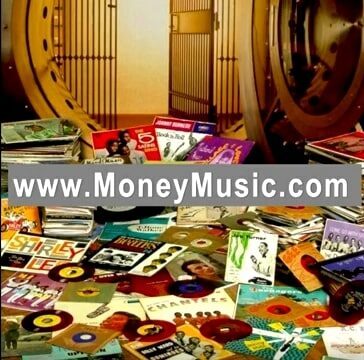
A former colleague called me over the weekend because her son has a few hundred vinyl records that once belonged to her and his father. He never listens to them, so he wanted to know how to figure out if any are valuable and, if so, how to go about selling them. She remembered that I used to have a semi-regular guest who knew about this stuff, but she’d forgotten his name.
The guy she was talking about is John Marshall, a renowned record collector who first appeared on my radio show in the late 1980s and returned many, many times over the next 30 years. Each time, I would invite listeners to call and ask him about the value of some record they owned. In the early years, compact discs were becoming the most popular format but many people still had music on vinyl. More recently, I heard from baby boomers and their offspring who have records in boxes and didn’t know what to do with them.
Each time I brought John on, the phone lines lit up and stayed full for an hour. I got to as many of them as possible, but recognized that the overwhelming majority of my listeners would never call because they were on their way to work in their cars and we were still years away from cell phones being omnipresent. Still, they paid rapt attention to John’s answers because they, too, had copies of the same albums or were just curious to hear if anyone had something really valuable.
People would ask about their original copies of The Beatles’ “Sgt. Pepper’s Lonely Hearts Club Band,” or Fleetwood Mac’s “Rumours,” or Michael Jackson’s “Thriller.” John would patiently explain that those were all multi-million sellers and thus not even close to being rare enough for collectors to have any interest in them.
We both would laugh every time someone asked about the Lynyrd Skynyrd “Street Survivors” album, which was released in 1977 just three days before a plane crash that killed lead singer Ronnie Van Zant, guitarist Steve Gaines, and Steve’s sister Cassie, a backup singer. The cover art showed the band nearly covered in flames, but it was eventually pulled by MCA Records out of respect and replaced with another photograph. By then, the album with the original cover had already sold several hundred thousand copies, many of which were bought by my audience of classic rock fans. Because it had been so popular, it wasn’t worth much on the resale market — unlike the “butcher cover” of The Beatles’ “Yesterday and Today” album, which has gone for more than $10,000.
Every once in a while, someone would ask John about an obscure recording and he would happily tell them it was worth several hundred dollars. Considering many of the albums had originally been purchased for less than $10, selling them for even $50 wasn’t a bad return on the investment, but nobody was going to get rich that way.
In exchange for appearing on my show, I let him plug his website, MoneyMusic.com, where John still sells all sorts of price guides for albums, covers, and picture discs/sleeves. He offers guidance on how to sell and store your vinyl collection, and also does online appraisals at a very low price.
Sometimes, John would prepare a special top ten list of valuable records tied to a theme, an artist, or a holiday (e.g. Christmas songs). He’d explain whether the stereo or mono version is worth more, what color the label should be, or other discerning details. He’s posted some of those on YouTube, including this from a couple of months ago, in which he explains why a Paul McCartney album is worth about $5,000…
